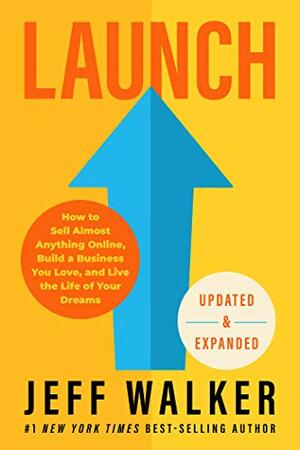Table of Contents
Whether you’re releasing a major new product or a little update to an existing one, you should always begin preparations well before the launch date using a new product launch checklist.
Bringing a product to market may be nerve-wracking and complex due to all the moving factors involved. To aid you, we have compiled the finest product launch advice. The following is a developed and detailed checklist for a successful new product launch.
1. Understand your target audience
Finding out what motivates your consumer base is essential, regardless of whether you refer to it as “market research” or “customer development.” Understanding their needs wants, and problems might help you create and sell an effective product or service.
Learning who your consumer is doesn’t need you to put in years of hard study. Specifically, we recommend conversing with 12–15 actual or potential consumers.
When conversing with them, pay close attention to the phrases “I wish a product provided this function…” and “Why can’t products do this?” Use probing inquiries like “Can you be more detailed about that?” in response to such broad assertions. If they don’t mention difficulties, you may feel more by asking open-ended questions.
You can learn a lot about their main problems and how to advertise a solution to those problems by having these discussions. Once you have this information, you can create a buyer persona for your company and direct your efforts toward satisfying that individual.
2. Create a positioning statement
Write out a statement that can clearly and concisely answer these three questions:
- Who is this product aimed at?
- What problem does it solve?
- So, how does it stand apart from the competition?
If you’d like to go even deeper, create a statement that answers the following questions:
- Who exactly are you trying to reach?
- Who among the intended consumers is most likely to acquire the product?
- Just what will your product be known as?
- In what subset of goods and services does your product reside?
- Tell me how it stands out from other products in the same market.
- To what extent are you able to differentiate your goods from the competition?
Still, need more guidance you can find many available templates online.
3. Pitch your positioning statement
Once you’ve settled on a position statement, you need to share it with other professionals. This could be with some people who have experience in the field.
If other professionals have trouble seeing the value in your product, your clientele would likely feel the same way. It might be a good indicator that your new product launch will be successful if other experts are enthusiastic about it.
4. setup a go-to-market strategy
You will utilise this method to introduce and advertise your goods. Some companies opt for a “funnel strategy,” while others choose “flywheel thinking.”
There are a lot of moving variables in this process, regardless of the approach you use. A good strategy is to find a go to market strategy template online and use it. This will help you develop a systematic plan for introducing your product to the market.
Start thinking about the material that increase a customer’s interest at each buying process step which includes: awareness, consideration and purchase. In the next step, you’ll need it.
5. Define an objective for your launch
Make careful you document your launch goals before diving into strategy implementation.
Set clear and measurable goals for the successful execution of the launch. Direct your focus on implementing launch strategies that help you achieve these goals.
Your product launch’s objectives may include, among other things, introducing the public to the product, increasing demand, or opening up new channels of distribution.
Writing your launch team’s objectives as SMART goals is an effective goal-setting method. A SMART (Specific, Measurable, Achievable, Relevant, and Time-Bound) purpose can be clearly defined, measured, prioritised, and completed by a certain date.
6. Create Marketing material
Create content that complements and ties into your marketing strategy and SMART objectives once you’ve laid the groundwork for each. Content such as blog entries, demonstrations, tutorials, and landing pages is fair game.
You may use our go-to-market plan as a guide to figure out what kind of content to produce at when times along the buyer’s journey of your target audience.
7. Get others Included
Launching a product requires a lot of preparation. Try informing others about your launch strategy using presentations, Slack, or email. Get them to be a part of your launch or create a team if you can. This will help you a lot along the way.
8. You are ready to launch
Once you’ve completed all the above steps, you can launch the product.
9. Go through the analytics and data
Assess the efficacy of the go-to-market plan after the introduction of the product. Adapt your strategy as needed if things are going differently than planned.
You should also keep in mind the objectives you established before the launch. Examine how successful you were in accomplishing your goals. Failure to reach targets at launch might prompt a review of the product’s go-to-market strategy.
How much money do you require for a New product launch?
There is a wide variety of possible costs associated with introducing a new product to the market, from $10,000 up to over $10 million. However, the expense of introducing a new product may range widely, depending on factors including the nature of the product, the market, the level of competition, and the desired outcomes.
Launching a new product has widely varying costs. For example, a new product launch on Amazon will have quite different expenses for an entrepreneur than it would for a large corporation entering a million-dollar market.
Example scenarios 1
Let’s say you are an entrepreneur trying to make money online by selling a design software you created. Researching your target market will help you establish the most effective marketing approaches for reaching your objectives, the kind of message that will most effectively reach your target demographic, and the design features most likely to attract your ideal customers. You may spend about $ 5,000 on a small number of focus groups to get at these details.
When releasing new software, choosing the most suitable marketing approach is important. It will cost you money to implement whatever method you select. Product branding by a professional designer may cost about $1,000, while a custom-built website may cost you between $500 and $3,000, depending on the site’s complexity and the designer’s rate per hour.
In the case of a full-time endeavour, these charges do not account for the wages you and your staff would need. It also needs to account for the price of employing a developer to fix bugs and add new features to the app.
Here, we’ll use a lowball figure of $8,000 for the sake of simplicity. It’s true that you can save money by handling these matters on your own, but doing so might result in a worse client experience.
Example scenarios 2
In contrast, let’s take into consideration a multinational corporation releasing a brand-new product. Marketing research in this region will cost you at least $30,000.
To set yourself apart from the competition, you may need to invest $15,000 on brand positioning and marketing materials and spend upwards of $30,000 on product design and packaging. Last but not least, your marketing team could require about $20,000 for search engine optimization (SEO), paid advertising (PPC), social media, content production, etc.
An estimated $125,000 is needed to successfully compete with other corporate rivals’ products during launch. This time, it doesn’t account for the money you’ll have to pay your advertising, scouting, and development departments.
Launching a Product on the Internet
Making ensuring you’ve completed the aforementioned stages is crucial before releasing your goods online. However, there are certain extra measures you need to take if you want your campaign to thrive online.
Decide on a narrative you want to convey about your product
Which narrative do you want to spread through email, landing sites, and social media? This is like a positioning statement, but it has to be written from the perspective of your ideal customer. Inquire as to why they should buy your goods. What problems would your solution solve for them?
For a new product launch into the market, it’s crucial that all of the marketing and advertising materials for that product are consistent throughout all of the available digital platforms.
Take the example of how Living Proof promoted its brand-new Advanced Clean Dry Shampoo on its Instagram page. The plot centres on a little annoyance shared by users of all dry shampoos: the desire to retain the fresh-from-the-shower sensation.
Living ProofProof generates buzz and interest in its newest offering by sharing stories about its intended users and promoting it with the hashtag #NoWastedWashes.
Use social ProofProof like user reviews and case studies
Customers are more likely to try a new product if they know that others have previously bought it and liked it. At this point, it helps to have evidence from others.
Post reviews, testimonials, and case studies from satisfied customers in the days preceding up to or immediately after the debut of your product to demonstrate its value to potential buyers. If it makes sense for your business, you can take this a step further by paying influencers to spread the word about your product.
Consumers have enough education to know not to believe everything they read in advertisements, but they may put their faith in their peers. Use strategies based on this trust gained via social evidence.
Start social media and email marketing campaign
Make sure people know about your new product by launching a full-scale social media promotion.
Invest in paid advertising to introduce your brand to new consumers, make detailed product explanation videos to share on social media, and contact your current clientele through email to give them a sneak peek at your new product’s characteristics.
You might also invite professionals from the product development team to a live broadcast to discuss the latest features of your product with potential and current consumers.
At this point, you should be paying attention to how people respond to the information they’ve been given about your new product. If you want your product to succeed, you need to listen to your customers’ issues and incorporate their suggestions into future iterations of the product.
Allow for pre-ordering
Don’t make a customer who is eager to buy your new product wait if you can help it by allowing them to pre-order it. This not only helps to disperse demand evenly but also gives customers the freedom to buy the goods whenever it suits them best.
Proven product launch methods by Industry
Launching a Digital Product
An effective content marketing plan is essential for generating buzz before the release of a new digital product. Boost interest in and demand for your digital product using blog postings, email marketing, social media, and other avenues.
You should also make use of lead-creation tactics to get in touch with your current and potential clientele.
Take, for instance, the case of an SEO online course launch. You may get people on the waitlist for your SEO course by sending them blog posts on SEO in the weeks running up to the launch. This way, you can assess the success of your advertising campaigns while getting your brand in front of those who have previously shown an interest in it.
Instructions for Introducing a New Product to the Amazon Market.
Anyone who has made purchases on Amazon understands the significance of a detailed and accurate product listing. Take the time in the weeks leading up to launch to create a strong, high-converting product listing. This should include but not limited to taking high-resolution photos of your product, writing a description that outlines your product’s differentiating features, and using keywords to help your product rank on Amazon.
Furthermore, you’ll want to make sure you have reviews ready to go before you publish your product on Amazon since reviews are really crucial on Amazon. For this, you may either deliver your product to a small group of interested purchasers in advance of the entire launch. Gather reviews from them in preparation for the Amazon debut. You can publish your product on your own website first (earning reviews in the meantime) and then launch on Amazon.
Finally, double-check your stock levels to make sure you’re prepared for an Amazon new product launch. Make sure you have adequate inventory to rapidly ship orders placed on Amazon. Since you can’t predict how fast your product will acquire popularity there.
Launching a SaaS Product
Before releasing software as a service (SaaS), it’s important to study the competition and get a feel for the industry. The demand for software as a service (SaaS) is high, and the market is projected to expand by more than 16% by 2026. On the other hand, there is a lot of competition in the software as a service market. So you should know what sets your product apart before releasing it.
Conduct market research and focus groups to identify your product. Look into unique selling points and advantages before rolling out your product to the public.
Next, implement an effective content marketing plan to raise your website’s search engine rankings. Make sure your company comes up in results for keywords associated with your product.
Since you aren’t really releasing a tangible product, put in extra marketing efforts. You need to demonstrate to companies why your service is the best option for meeting their demands.
Limited companies with smaller finances may also benefit from free trials or a freemium option. This will help them evaluate your services before making a long-term investment.
Launching a Food related Product
The expenses of packaging, storage, and distribution, as well as the costs of promoting and selling the product, must be factored in before a food product can be brought to market (including branding and digital marketing).
Third, adhere to local and state laws on food safety. Take things like food processing areas, refrigeration, and cleanliness into consideration. You’ll want to be sure you’re in compliance with local health regulations.
Send your food product to a lab for examination. Also check with your state commerce to see what is required when it comes to nutrition labels. These help you ensure the information you put on the package is correct.
Food brokers are useful people to have on staff when introducing a new food product to the market. A food broker may enhance sales as soon as your product reaches the shelves. They can build partnerships with national or local grocery shops and develope a marketing strategy.
A food broker’s business intelligence and industry know-how may be invaluable during a food product’s first launch. This can help stores doing a trial run of a product for many months in order to decide stocking it.
valuable tips
For a new product launch you should take the following advices into consideration :
- You should position your product such that it helps your target audience make the most of a trend you’ve seen.
- Make sure you and the launch’s most important players meet regularly to discuss progress and clarify any remaining questions or concerns.
- Keep the product team informed of your marketing strategies. The product management group may have information that might help your marketing strategy as a whole.
However, it’s possible that causes outside your control may delay your product’s release. When such occurs, it may be necessary to postpone the launch.
Should you postpone a Product Launch
Why a new product launch should be postponed? There are three main factors to consider.
- When the product itself isn’t quite ready yet. Therefore you need to postpone to provide your customers with the greatest possible experience.
- Present consumers may experience less-than-ideal encounters with one of your existing items. Then you should consider developing a replacement. Make sure your present consumers are happy with your current offering before marketing a new product.
- Something major happening on a global, national, state or local scale might cause your target market to refocus their attention. This could be away from your business and the debut of your product. Prepare your consumers about new offering so they are ready when the time comes to roll out.
Best book to read on the topic
“Launch” by Jeff Walker is a comprehensive guide that delves into the art and science of product launches. In this game-changing book, Walker explores how entrepreneurs can effectively launch their products, services, or ideas to create massive success. He emphasizes the importance of a well-executed launch strategy, which can catapult businesses to new heights. This is a best seller book about product launch that every entrepreneur should read.





